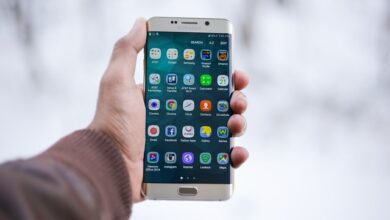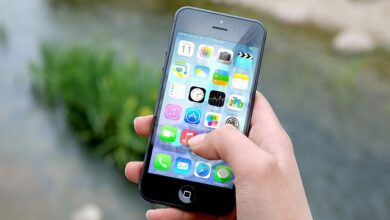
In the ever-evolving world of mobile technology, two major players dominate the smartphone market: Android and iOS. Both operating systems boast robust ecosystems, unique features, and a loyal user base. But when it comes to choosing the right platform for your needs, how do Android and iOS stack up against each other? This comprehensive guide explores the strengths and weaknesses of both systems to help you determine which one is better suited to your preferences and requirements.
1. Overview
Android: The Open-Source Powerhouse
Android, developed by Google, is an open-source operating system that powers a wide range of devices from numerous manufacturers, including Samsung, LG, OnePlus, and Xiaomi. Its open-source nature allows for extensive customization and innovation, making it a flexible choice for both manufacturers and users.
iOS: The Apple Ecosystem
iOS, developed by Apple Inc., is a closed-source operating system exclusive to Apple devices such as the iPhone, iPad, and iPod Touch. Its seamless integration with Apple’s hardware and other services creates a streamlined and user-friendly experience.
2. User Experience
Android: Customization and Flexibility
One of Android’s most significant advantages is its high level of customization. Users can modify almost every aspect of their device, from the home screen layout and widgets to the appearance of icons and the overall theme. This level of personalization allows users to tailor their device to their specific preferences.
Pros:
- Home Screen Widgets: Android users can place widgets on their home screens, offering quick access to apps and information.
- Launcher Apps: Custom launchers can alter the look and feel of the interface, providing a unique user experience.
- Default Apps: Android allows users to set default apps for various functions, such as web browsing and messaging.
Cons:
- Consistency Issues: With numerous manufacturers and custom skins, Android devices can vary significantly in user experience and performance.
- Software Updates: Android updates may be delayed due to manufacturer and carrier involvement, leading to inconsistencies in the update cycle.
iOS: Consistency and Simplicity
iOS is known for its intuitive and consistent user experience. Apple’s control over both hardware and software ensures a uniform experience across its devices.
Pros:
- Uniform Interface: iOS provides a consistent interface across all Apple devices, making it easier for users to navigate.
- Seamless Integration: The integration with other Apple services, such as iCloud, Apple Music, and Apple Pay, creates a cohesive ecosystem.
- Regular Updates: iOS updates are rolled out simultaneously to all supported devices, ensuring that users have access to the latest features and security patches.
Cons:
- Limited Customization: iOS offers less flexibility in customization compared to Android, with limited options for altering the user interface.
- App Limitations: Some customization features, such as default apps and widgets, are restricted in iOS.
3. Hardware and Design
Android: Diversity and Innovation
Android’s open nature allows it to run on a diverse range of hardware, from budget-friendly devices to high-end flagship phones.
Pros:
- Wide Range of Devices: Users can choose from a vast selection of devices at different price points and specifications.
- Innovative Features: Manufacturers often incorporate unique features, such as advanced camera systems and innovative display technologies.
Cons:
- Inconsistent Quality: The quality and performance of Android devices can vary significantly between manufacturers and models.
- Fragmentation: The wide range of hardware can lead to compatibility issues and inconsistent performance across different devices.
iOS: Premium and Optimized
iOS is designed to work seamlessly with Apple’s hardware, ensuring optimized performance and a premium build quality.
Pros:
- Optimized Hardware: Apple’s tight integration between hardware and software ensures smooth performance and efficient use of resources.
- Build Quality: Apple devices are known for their high build quality and premium materials.
Cons:
- Limited Hardware Choices: iOS is limited to Apple’s devices, which may not cater to all budget ranges or preferences.
- Higher Cost: Apple’s devices tend to be more expensive compared to many Android alternatives.
4. App Ecosystem
Android: Open and Diverse
The Google Play Store is home to a vast array of apps, with a focus on flexibility and variety. Android also supports alternative app stores, providing users with additional options.
Pros:
- Variety of Apps: The Google Play Store offers a diverse range of apps, including many free options.
- Alternative App Stores: Users can access apps from alternative app stores and install APK files directly.
Cons:
- Quality Control: The open nature of the Play Store can lead to inconsistent app quality and security concerns.
- App Fragmentation: Some apps may not be optimized for all Android devices, leading to varying user experiences.
iOS: Curated and Secure
The Apple App Store offers a curated selection of apps with a strong emphasis on quality and security. Apple’s stringent app review process ensures that apps meet high standards.
Pros:
- High-Quality Apps: The App Store is known for its high-quality apps and games, with a strong focus on security and user privacy.
- Consistent Experience: Apps are optimized for iOS devices, providing a consistent user experience.
Cons:
- App Store Restrictions: The App Store’s strict guidelines can limit the availability of certain types of apps and features.
- Higher Costs: Many apps on iOS may have higher price points compared to their Android counterparts.
5. Privacy and Security
Android: Customizable but Vulnerable
Android’s open nature can sometimes make it more vulnerable to security threats, although Google has implemented various security features to protect users.
Pros:
- Security Features: Android includes built-in security features such as Google Play Protect and regular security updates.
- Customization: Users can control app permissions and install security software for added protection.
Cons:
- Vulnerability: The open nature of Android can expose users to potential security risks, especially if they install apps from unknown sources.
- Fragmentation: Inconsistent software updates across devices can leave some users vulnerable to security threats.
iOS: Secure and Controlled
iOS is known for its strong security and privacy features, with Apple’s strict control over the ecosystem playing a significant role.
Pros:
- Strong Security: iOS benefits from a closed ecosystem and frequent security updates, reducing the risk of vulnerabilities.
- Privacy Features: Apple emphasizes user privacy, with features such as App Tracking Transparency and data encryption.
Cons:
- Limited Customization: The closed nature of iOS restricts some aspects of customization and control over device settings.
- Dependency on Apple’s Ecosystem: Users are more dependent on Apple’s ecosystem for apps and services, which can limit choices.
6. Ecosystem Integration
Android: Versatile Integration
Android integrates well with Google’s ecosystem and offers compatibility with various third-party services and devices.
Pros:
- Google Services: Integration with Google services such as Gmail, Google Drive, and Google Assistant enhances productivity.
- Third-Party Compatibility: Android devices can work with a wide range of third-party services and devices, offering flexibility.
Cons:
- Ecosystem Fragmentation: The wide range of manufacturers and customizations can lead to fragmented experiences across different devices.
iOS: Seamless Integration
iOS is known for its seamless integration with other Apple products and services, creating a cohesive ecosystem for users.
Pros:
- Apple Ecosystem: Integration with Apple’s ecosystem, including Macs, Apple Watches, and Apple TVs, provides a unified experience.
- Continuity Features: Features like Handoff and AirDrop enhance productivity and ease of use across Apple devices.
Cons:
- Limited Cross-Platform Integration: Integration with non-Apple services and devices can be less seamless compared to Android.



